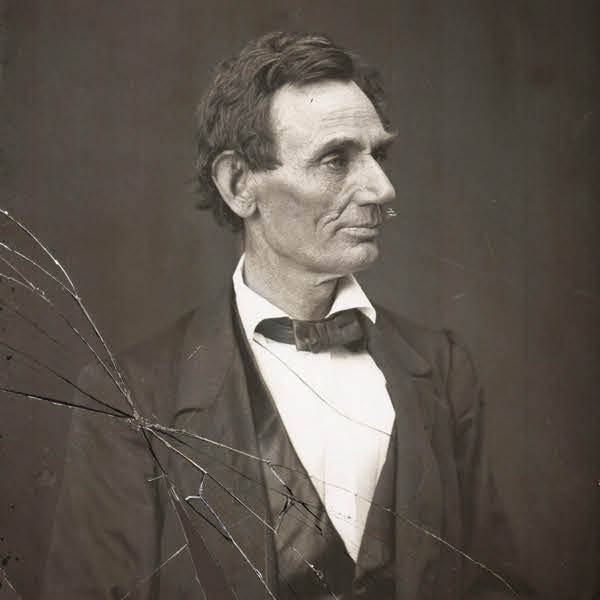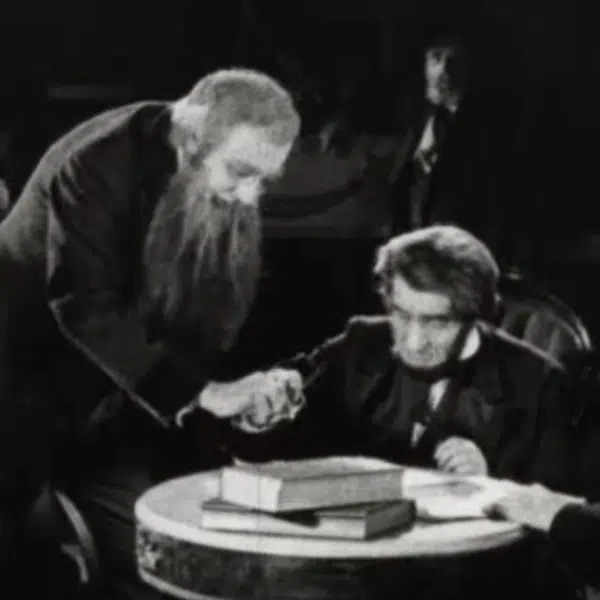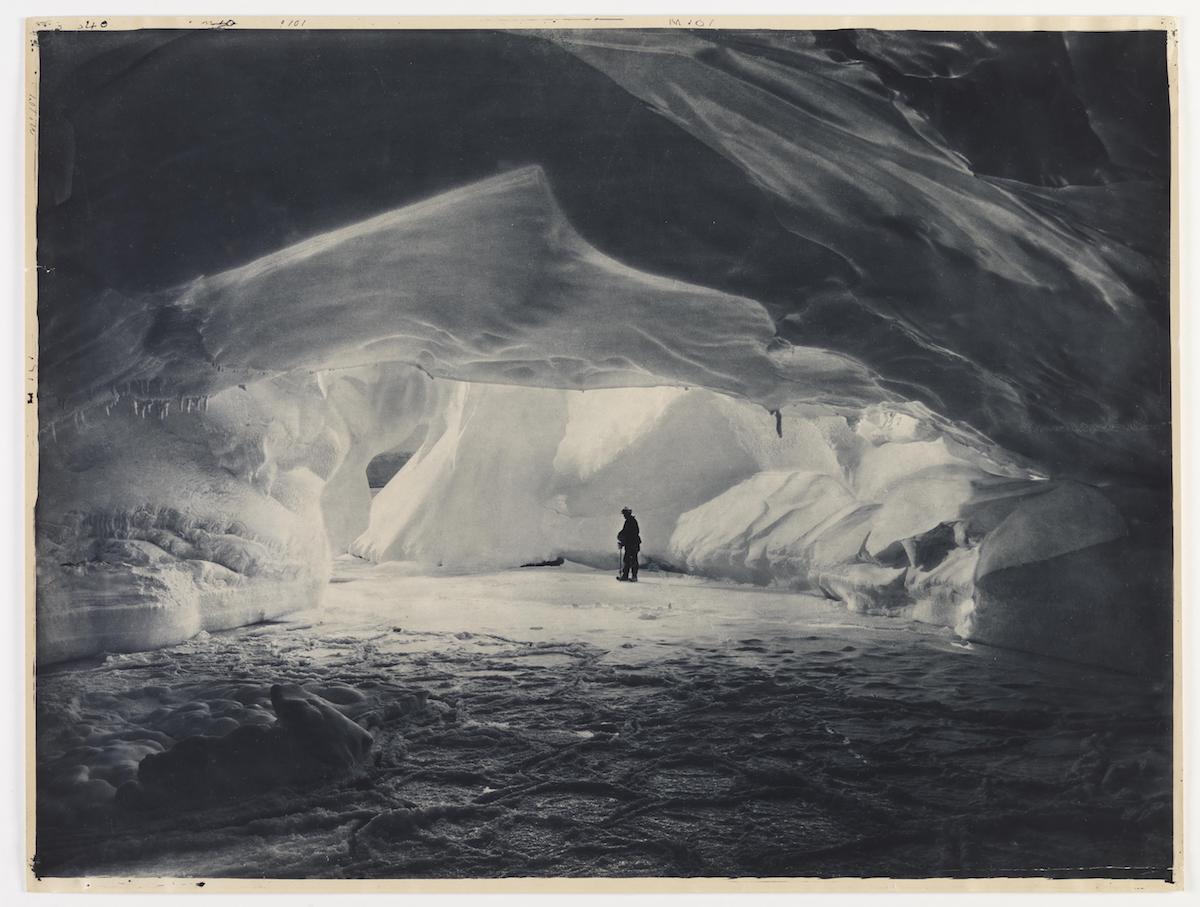
Cavern carved by the sea in an ice wall near Commonwealth Bay
This post may contain affiliate links. If you make a purchase, My Modern Met may earn an affiliate commission. Please read our disclosure for more info.
In 1911, a group of scientists and adventurers set off on the Australasian Antarctic Expedition, which covered previously unexplored areas of Antarctica. Led by Dr. Douglas Mawson—a geologist, explorer, and academic—the voyage produced a wealth of scientific information and aided in mapping the area.
The journey was meant to chart the 2,000-mile coastline of Antarctica that lay south of Australia and lasted until 1914. From several basecamps, researchers were able to make scientific meteorological observations, while teams on sledging journeys went into previously unexplored areas.
Conditions were perilous, with Mawson himself losing a member of his sledging team—Lieutenant Belgrave Ninnis. Ninnis, who was jogging next to the sled, fell through a crevasse on a glacier, never to be seen again. During the same incident, Mawson and his other team member, Xavier Mertz, also lost six of their dogs, most of their rations, and their tent. Both men deteriorated quickly, with Mertz also eventually passing away.
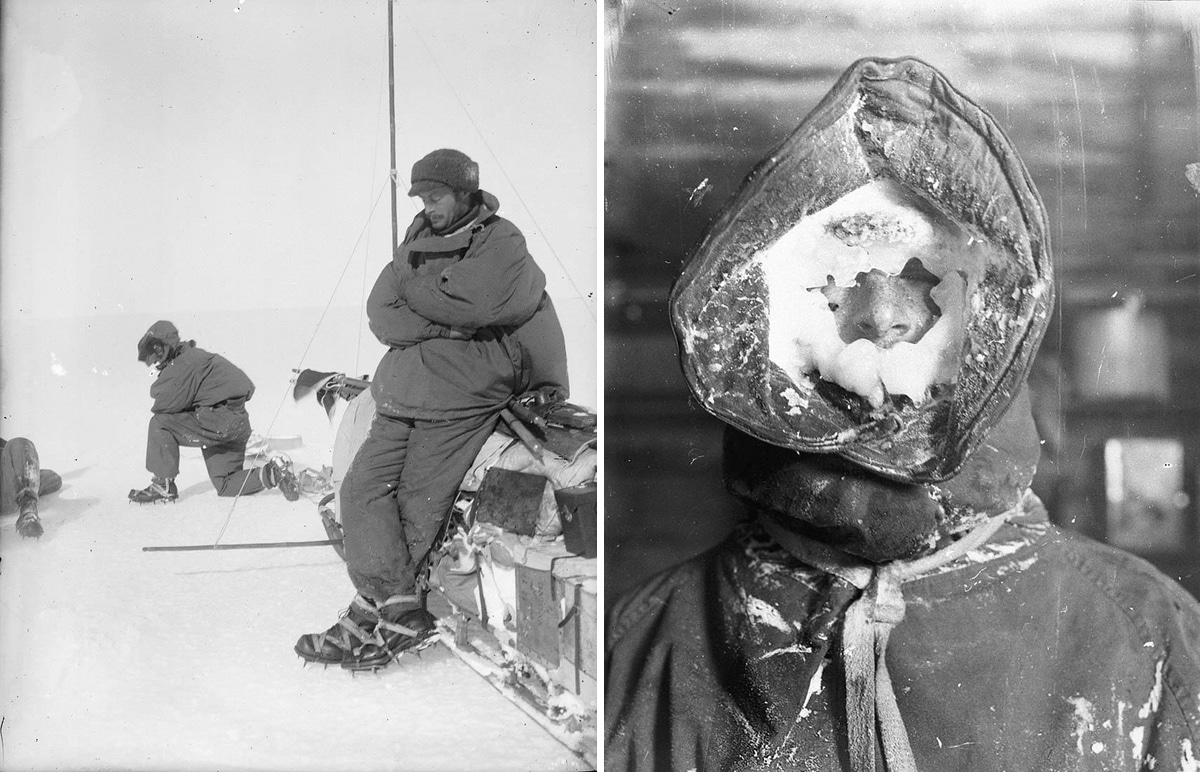
Left: Mawson rests at the side of sledge, outward bound on first sledge journey in Adelie Land | Right: Ice mask, C.T. Madigan
Mawson continued his struggle to return to basecamp alone, passing 30 days and falling into a crevasse himself before finally making it back. Mawson's book The Home of the Blizzard recounts his harrowing tale, as well as the expedition's triumphs. Ending in 1914, the work by the intrepid explorers paved the way for later claims formalized in 1936 as the Australian Antarctic Territory.
Thanks to the work of James Francis “Frank” Hurley, official photographer at Cape Denison, as well as other members of the team, we have a rich archive of images that capture the spirit of these intrepid explorers. Not only are the photographs a window into early 20th century exploration, but a look at the Antarctic landscape as it once was.
The Australasian Antarctic Expedition lasted from 1911 to 1914 and explored previously unknown areas of Antarctica.
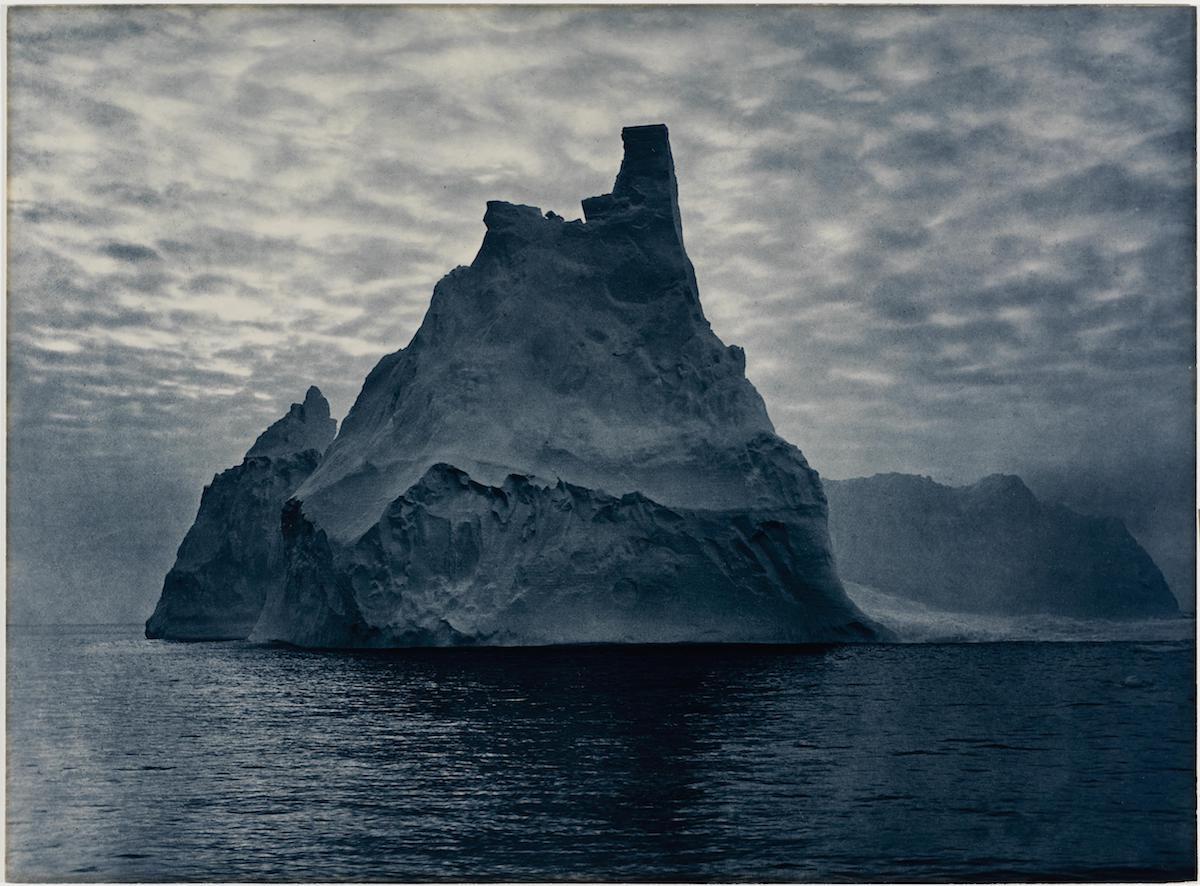
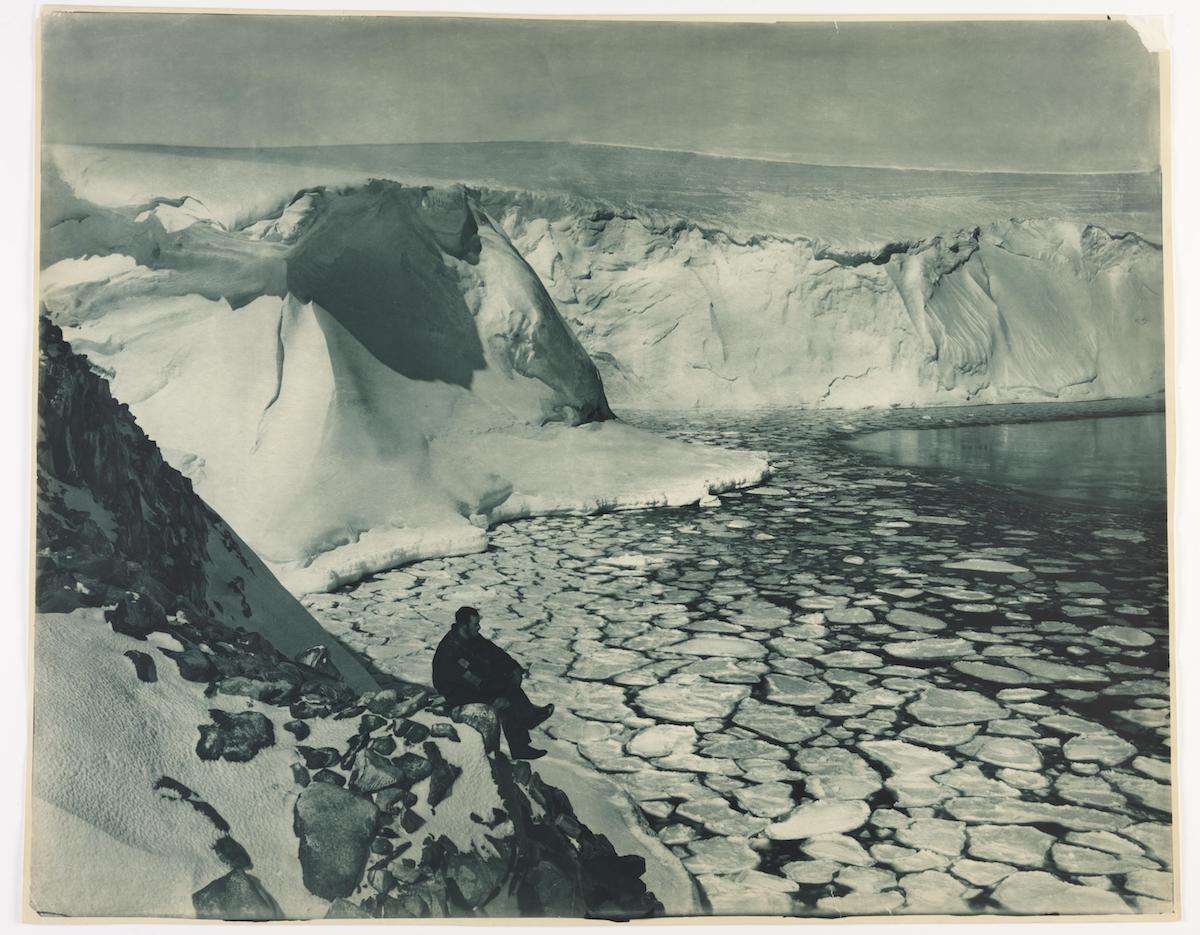
F. Bickerton looking out over seas near Commonwealth Bay
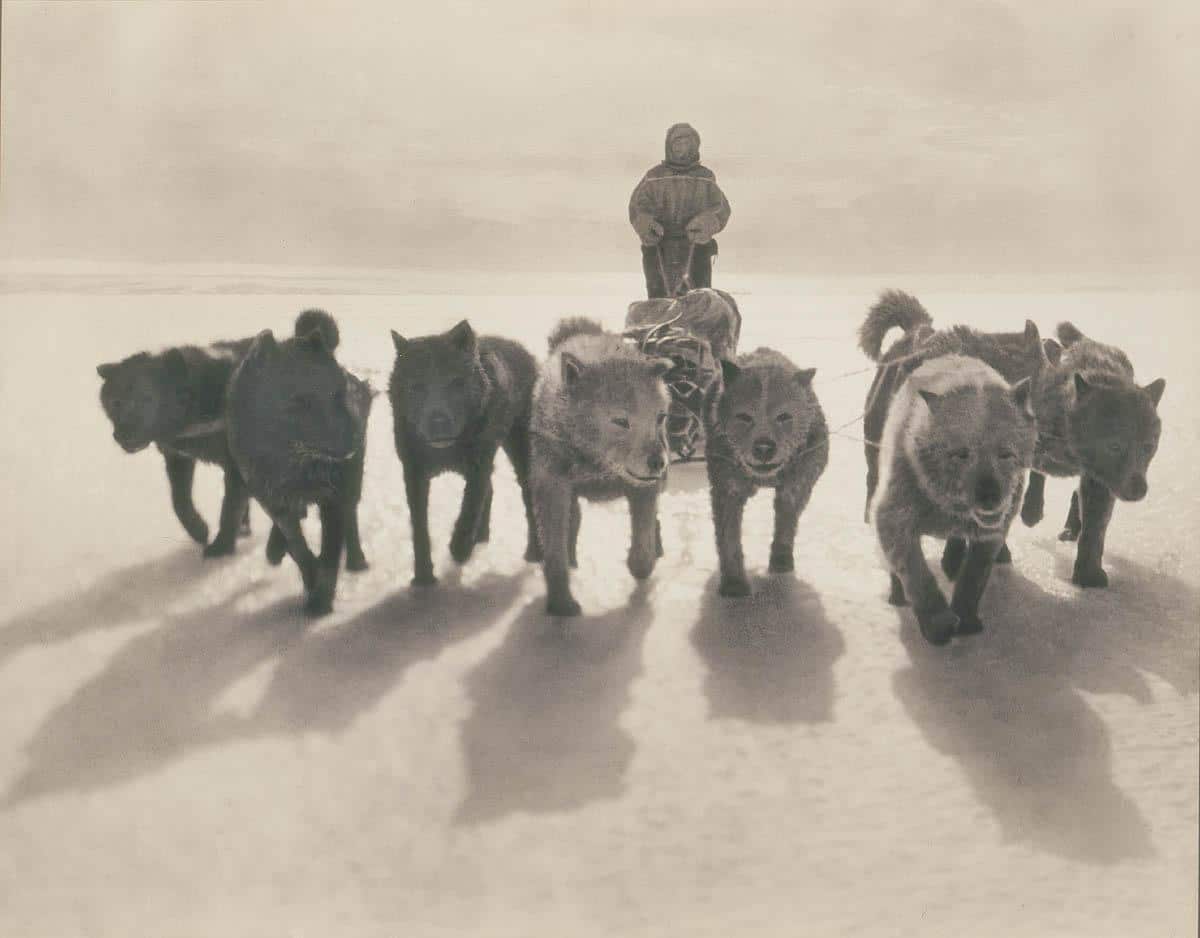
Huskies pulling sledge

Wreck of the ‘Gratitude', Macquarie Island, 1911
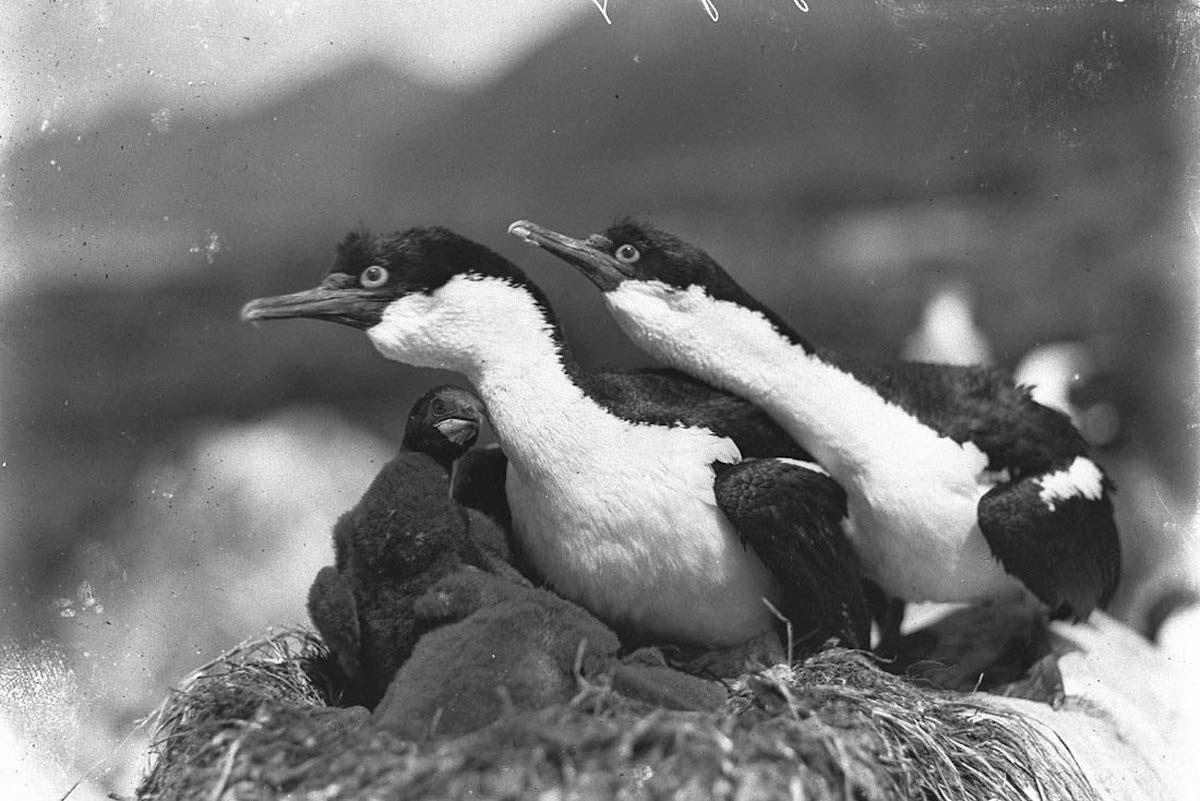
Shags defending nest, Macquarie Island
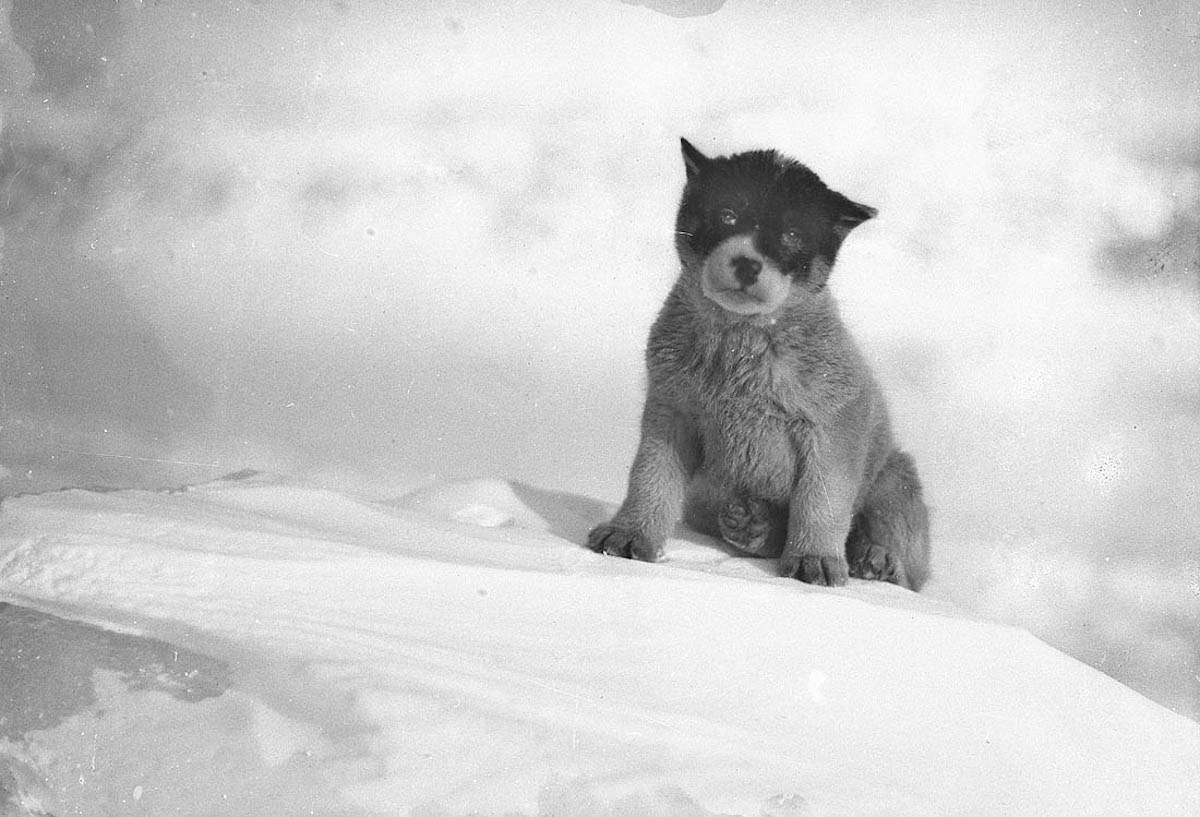
Blizzard, the pup in Antarctica
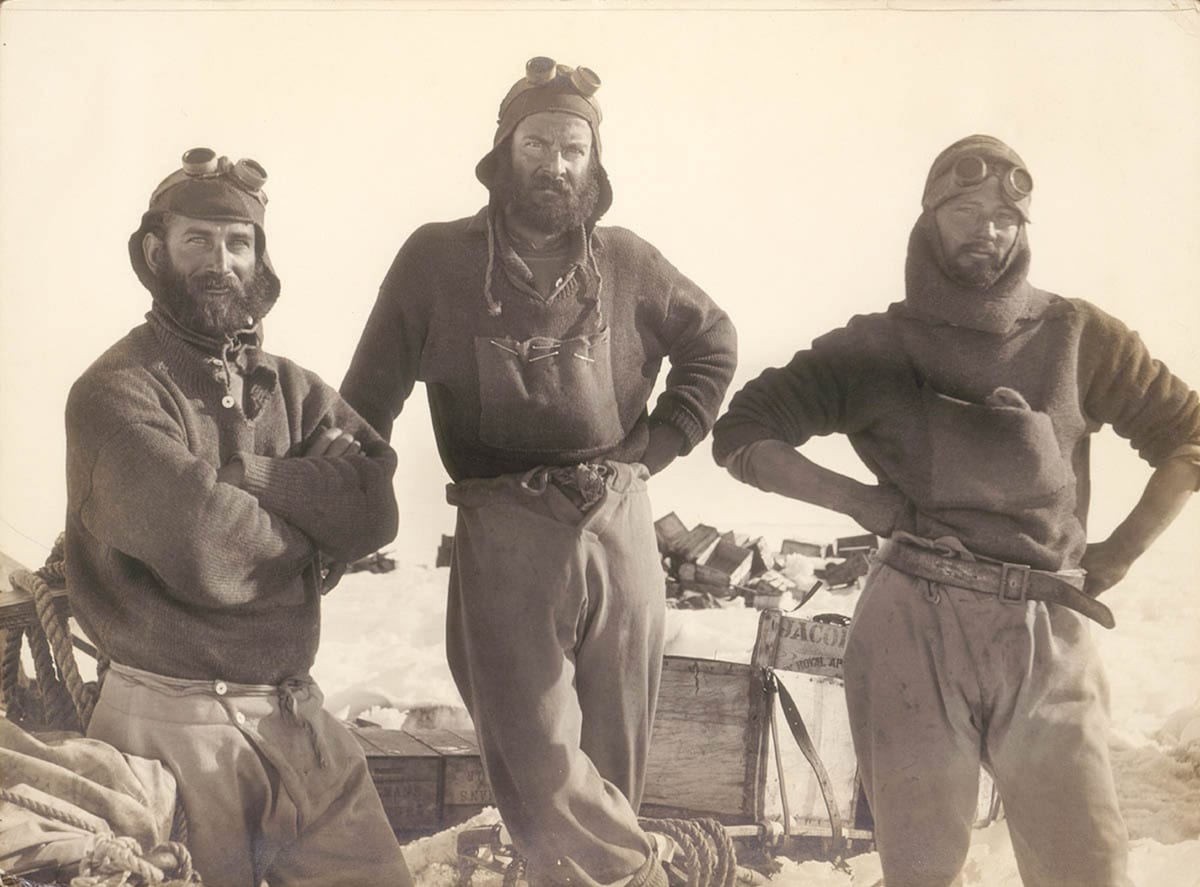

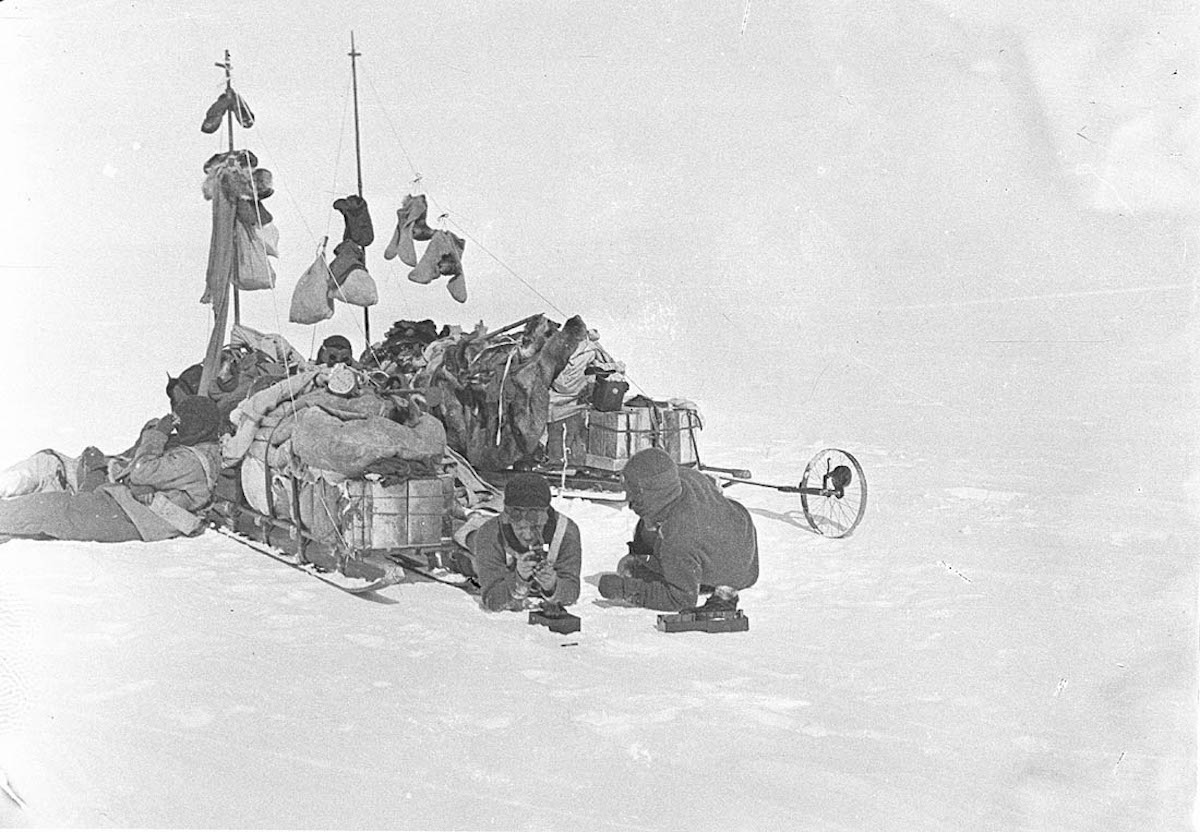
Bob Bage and J. Hunter at 65 miles south
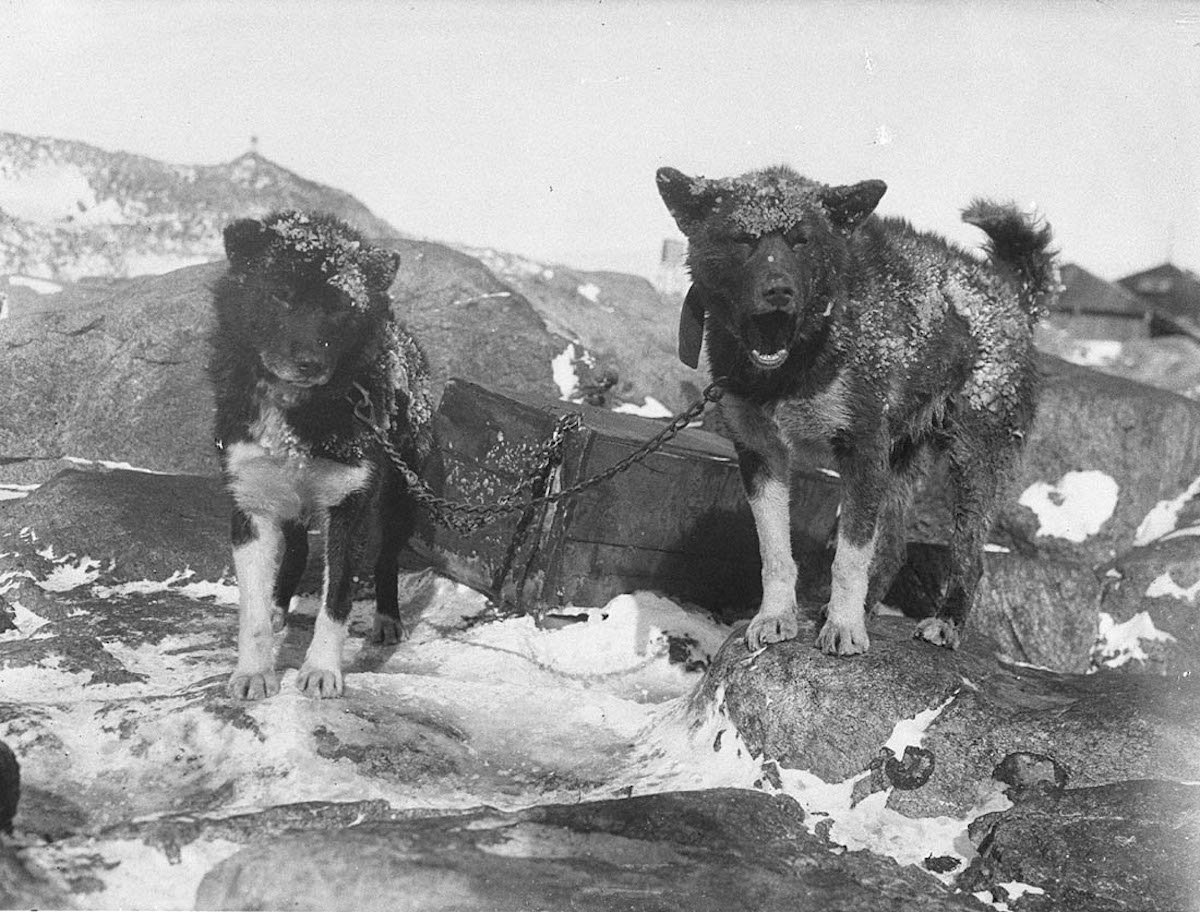
Basilisk & Ginger at Main Base
Led by geologist Dr. Douglas Mawson, who was knighted for his duties, the expedition was heralded for its scientific observations.
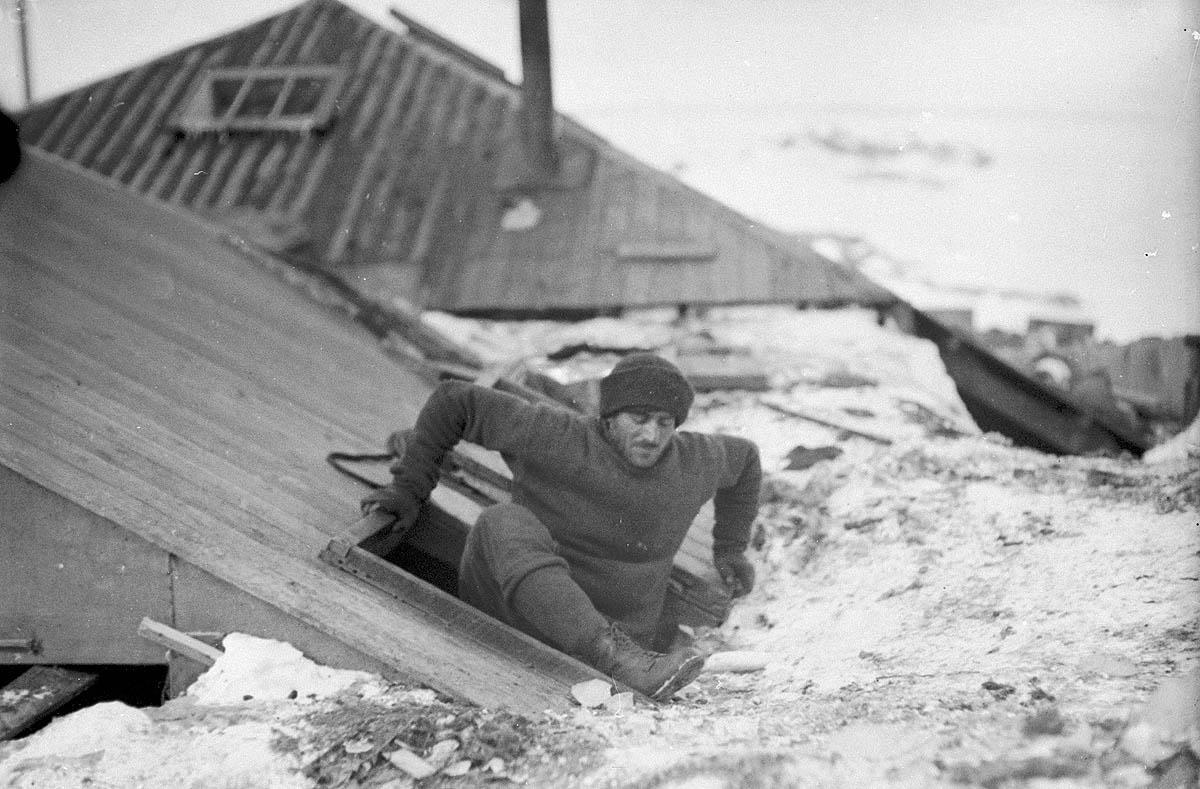
Xavier Mertz leaving the hut by the trapdoor on the veranda roof

Skeleton of sea-elephant and Harold Hamilton
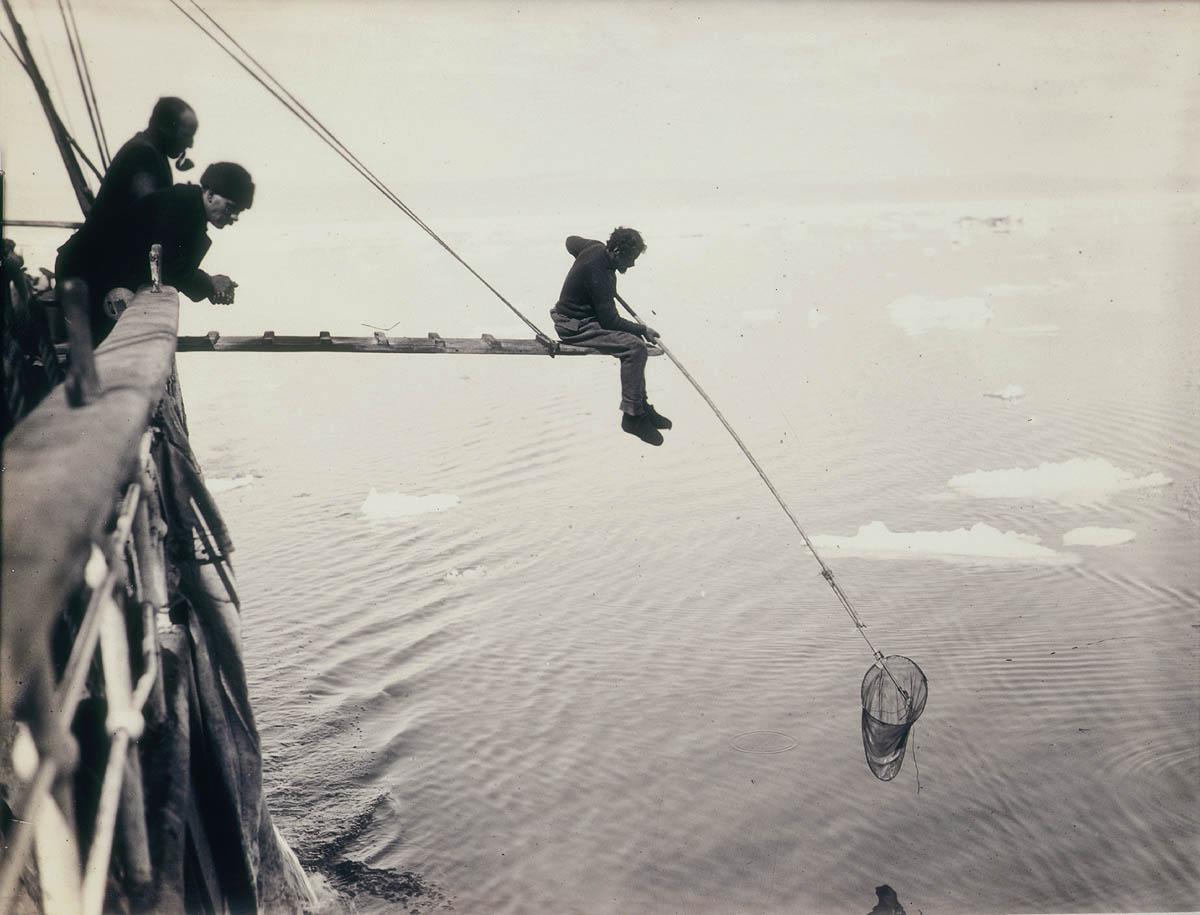
Hand-netting for macro-plankton from Aurora
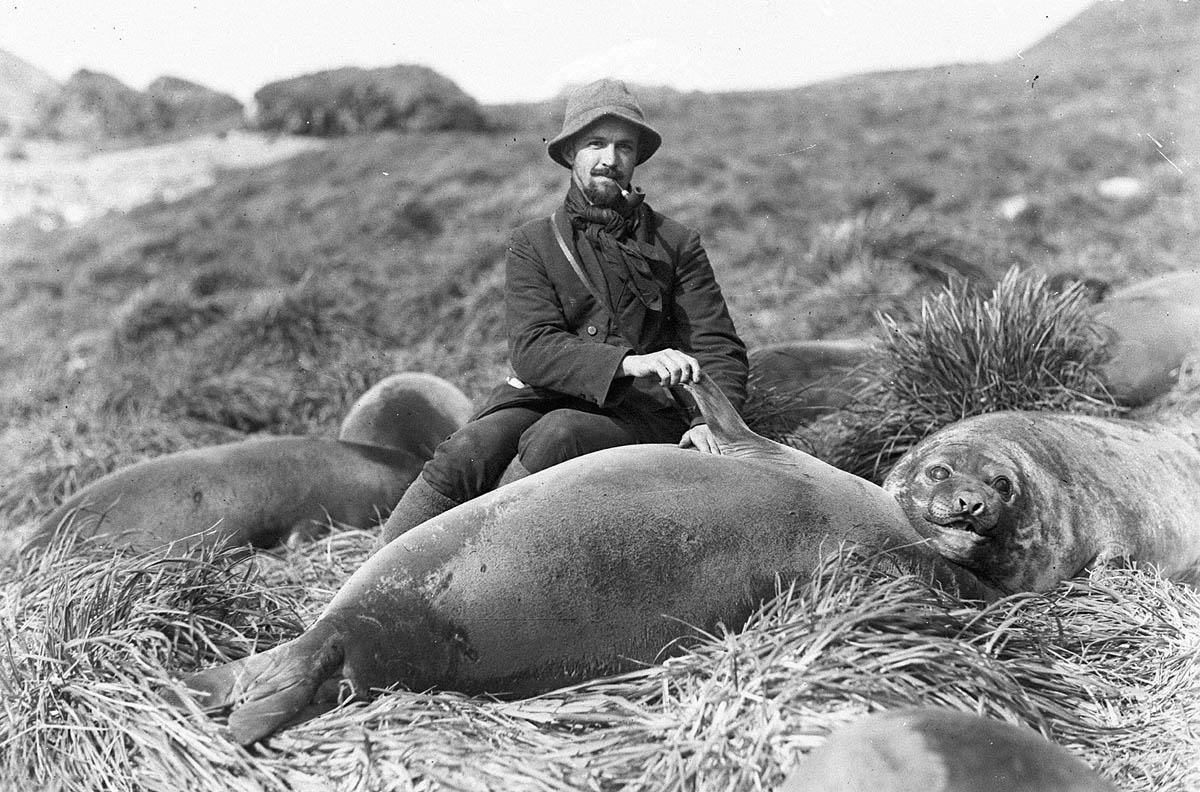
Arthur Sawyer and sea elephant pup

Australian Antarctic Expedition members in the kitchen
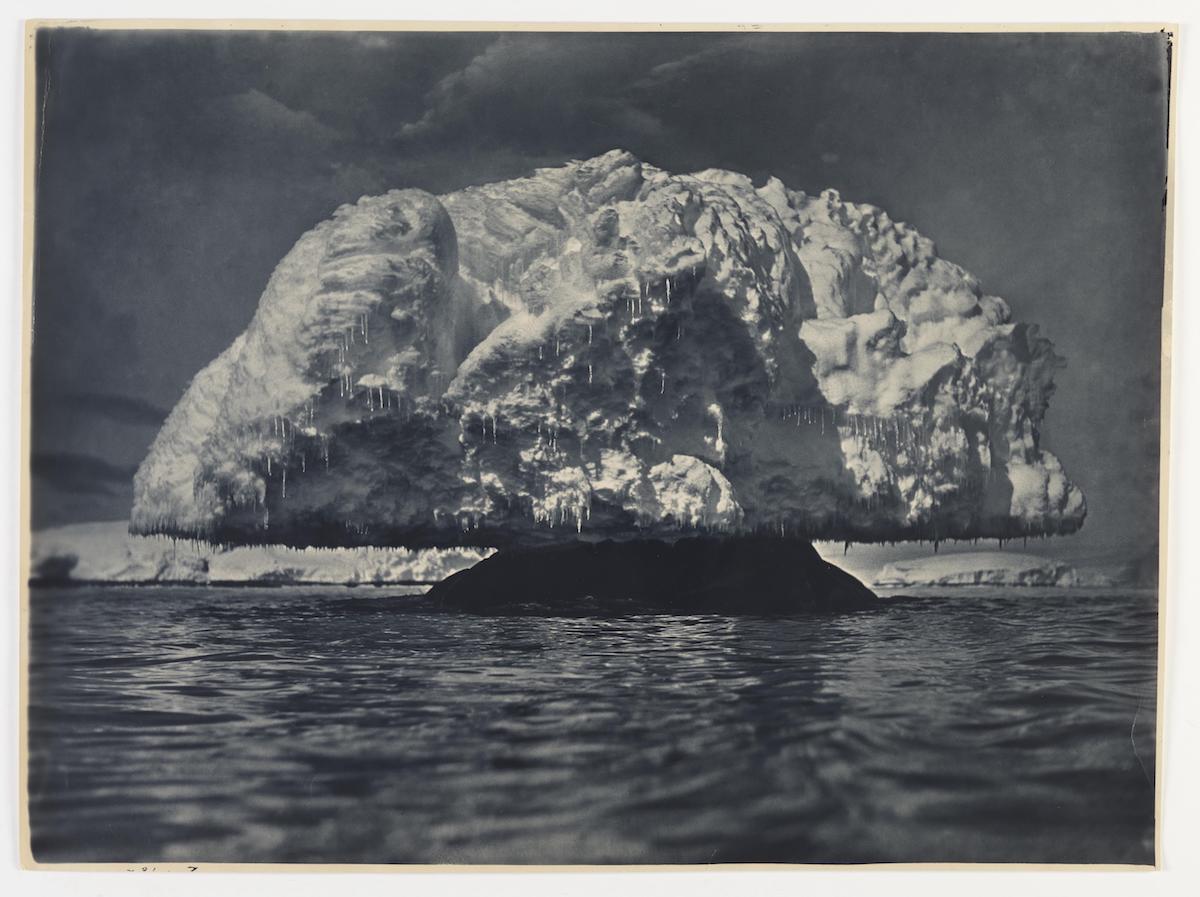
Mushroom ice formation, 1912
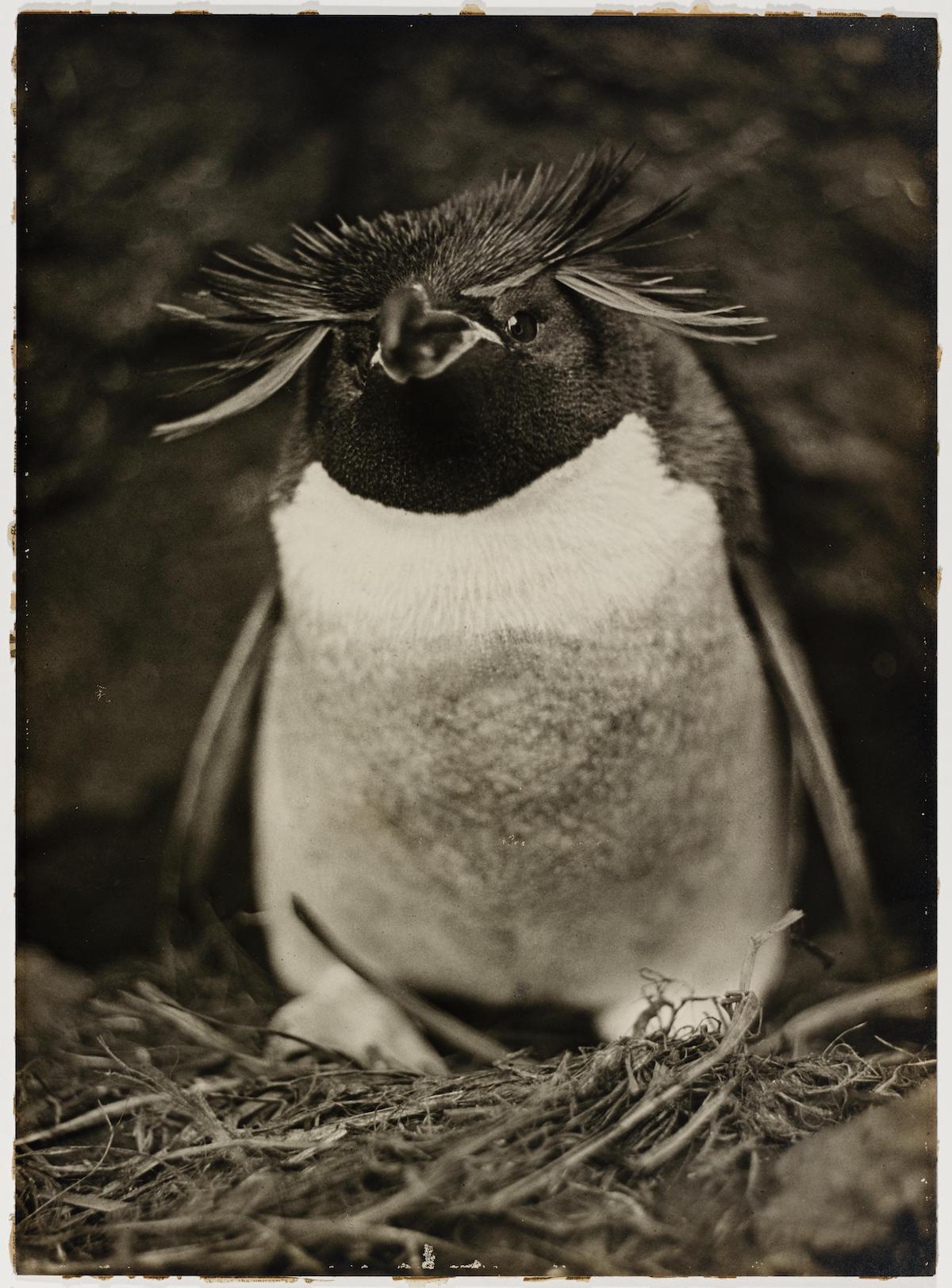
Sclater penguin
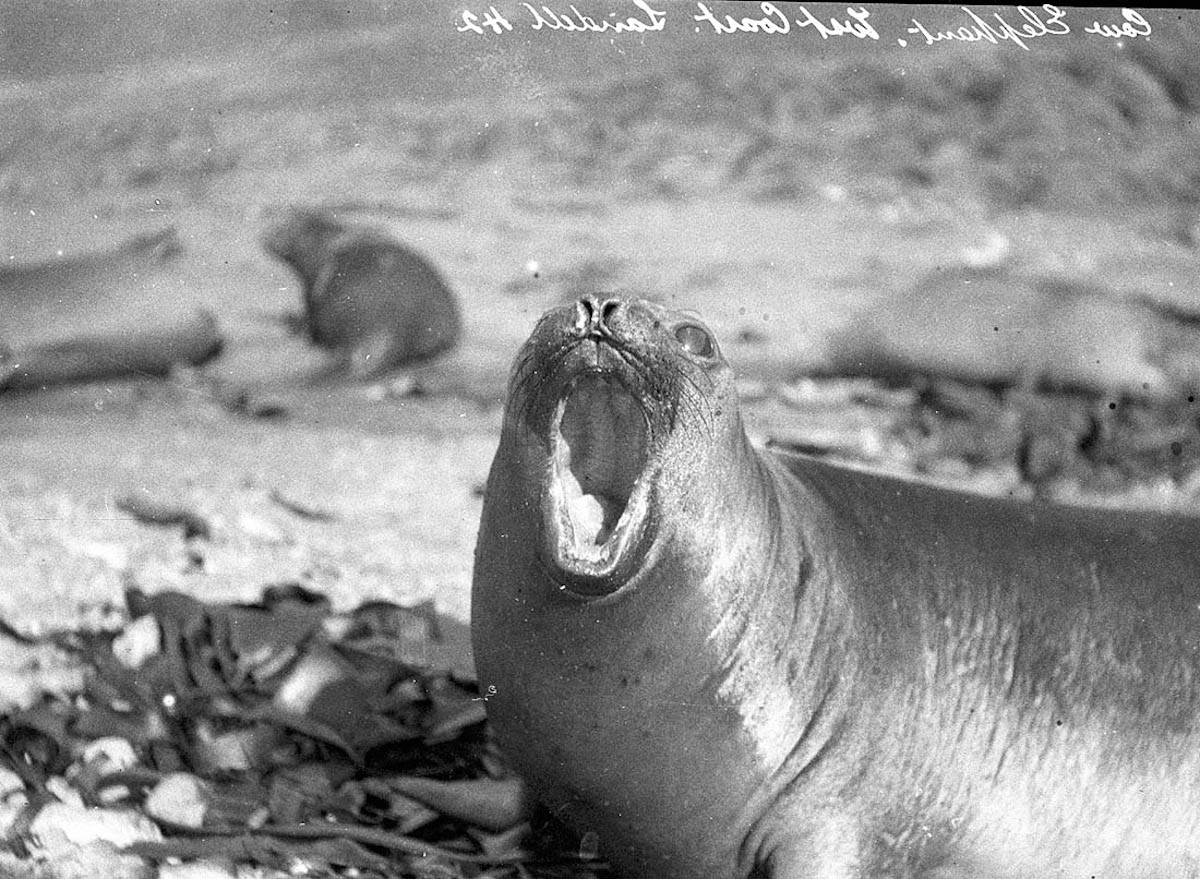
A large team was spread between multiple basecamps and some huts still remain at Cape Denison.
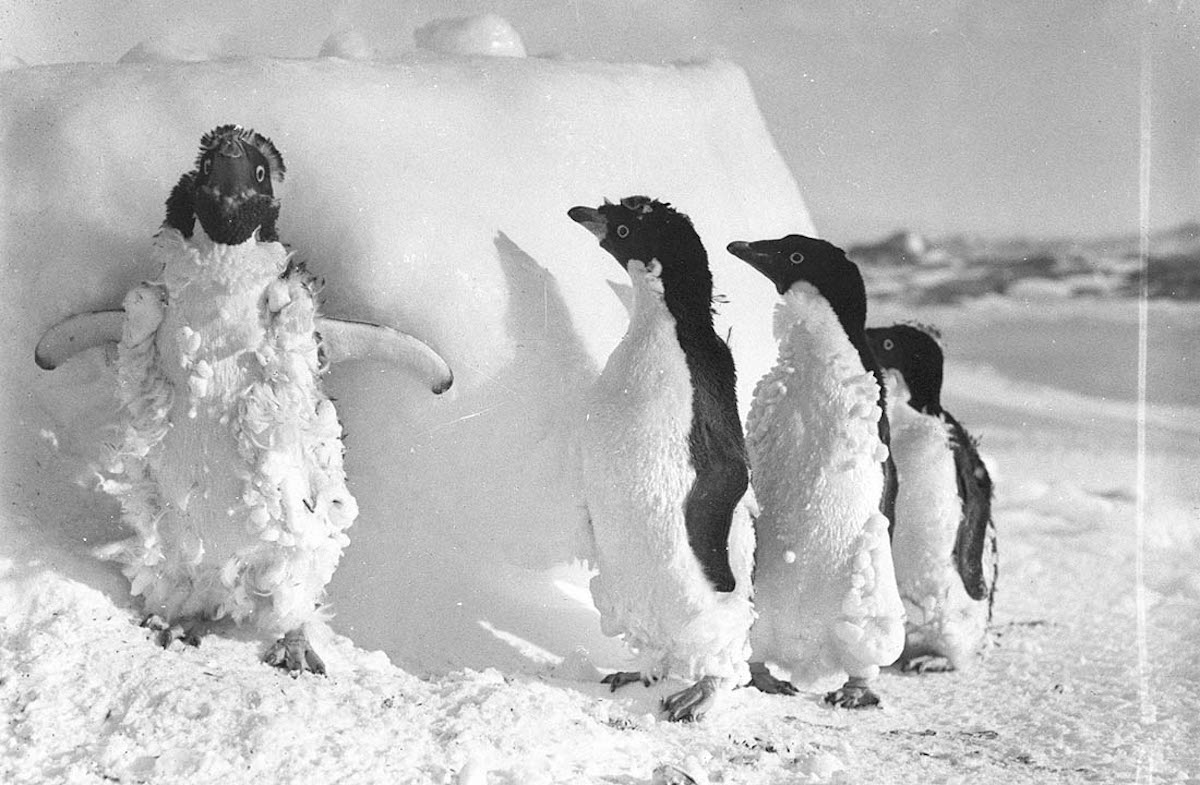
Ice cased Adelie penguins after a blizzard at Cape Denison
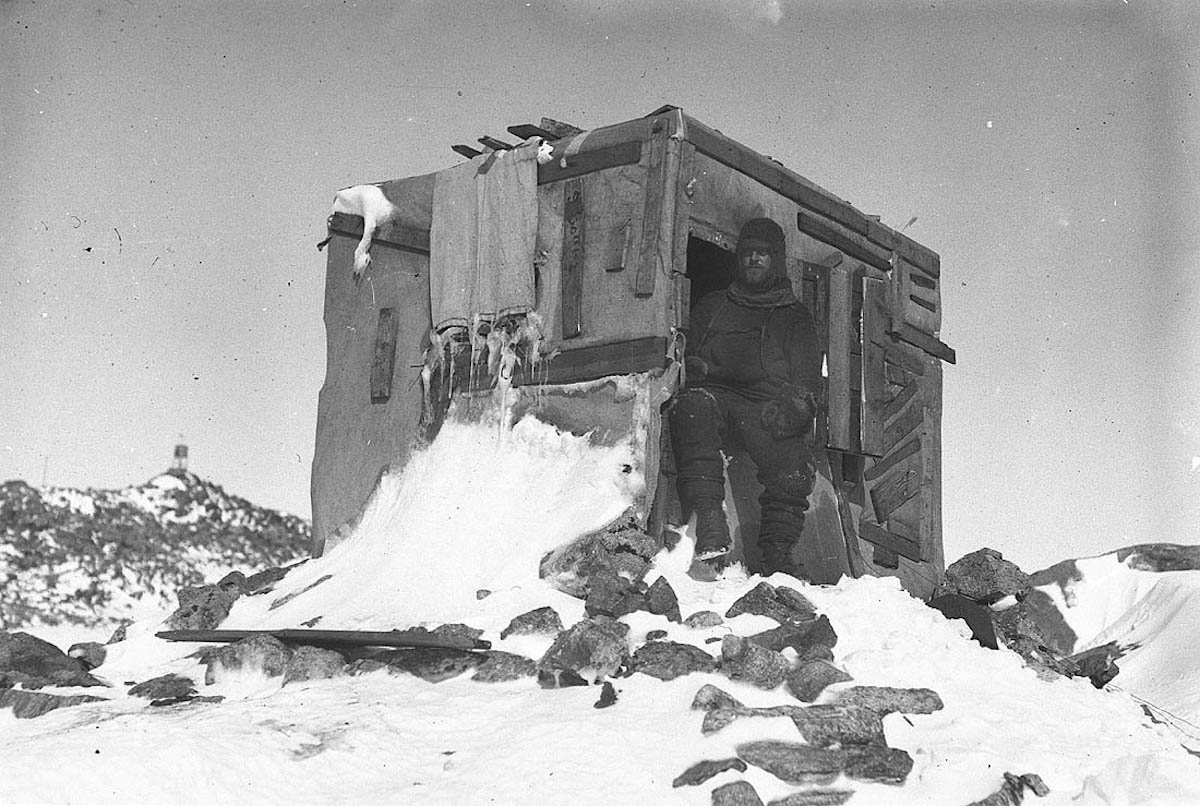
Bage in the entrance to the Astronomic Observatory
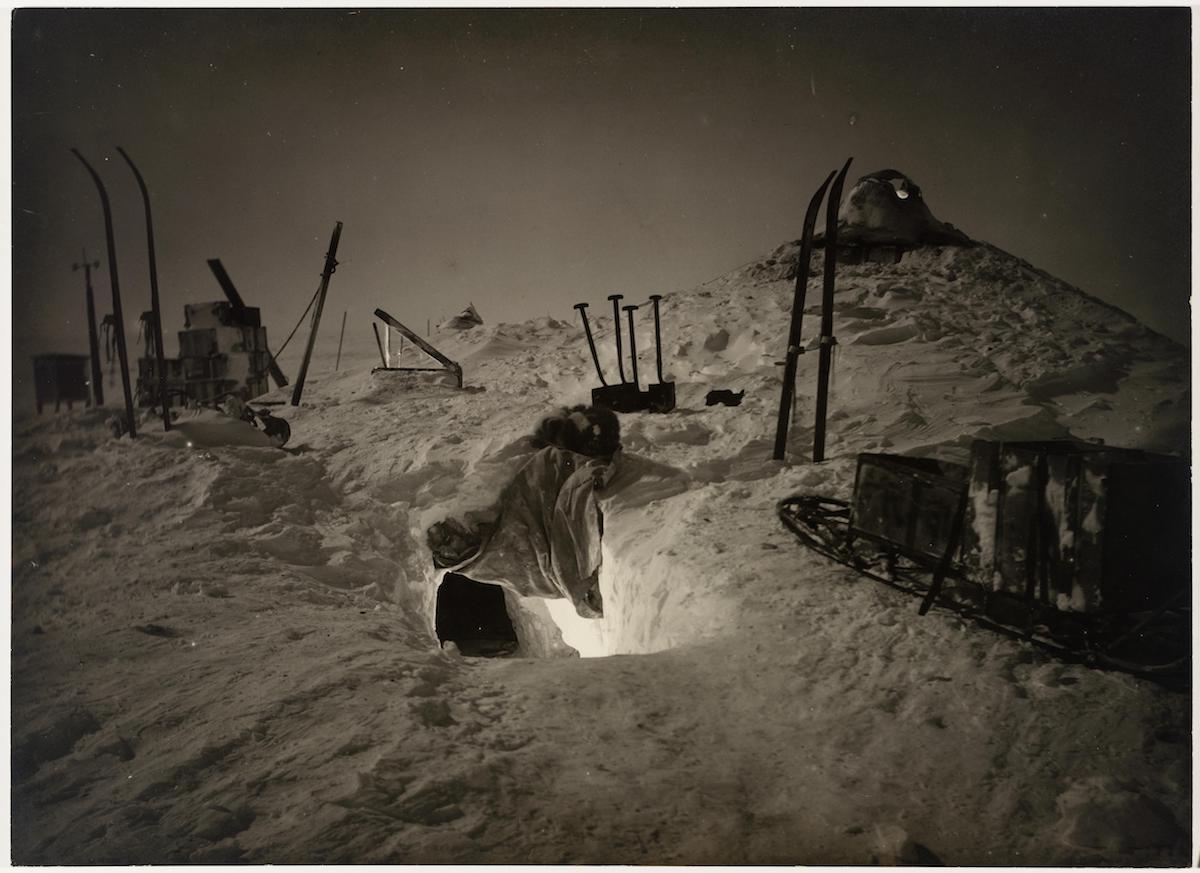
Winter quarters, Queen Mary Land winter
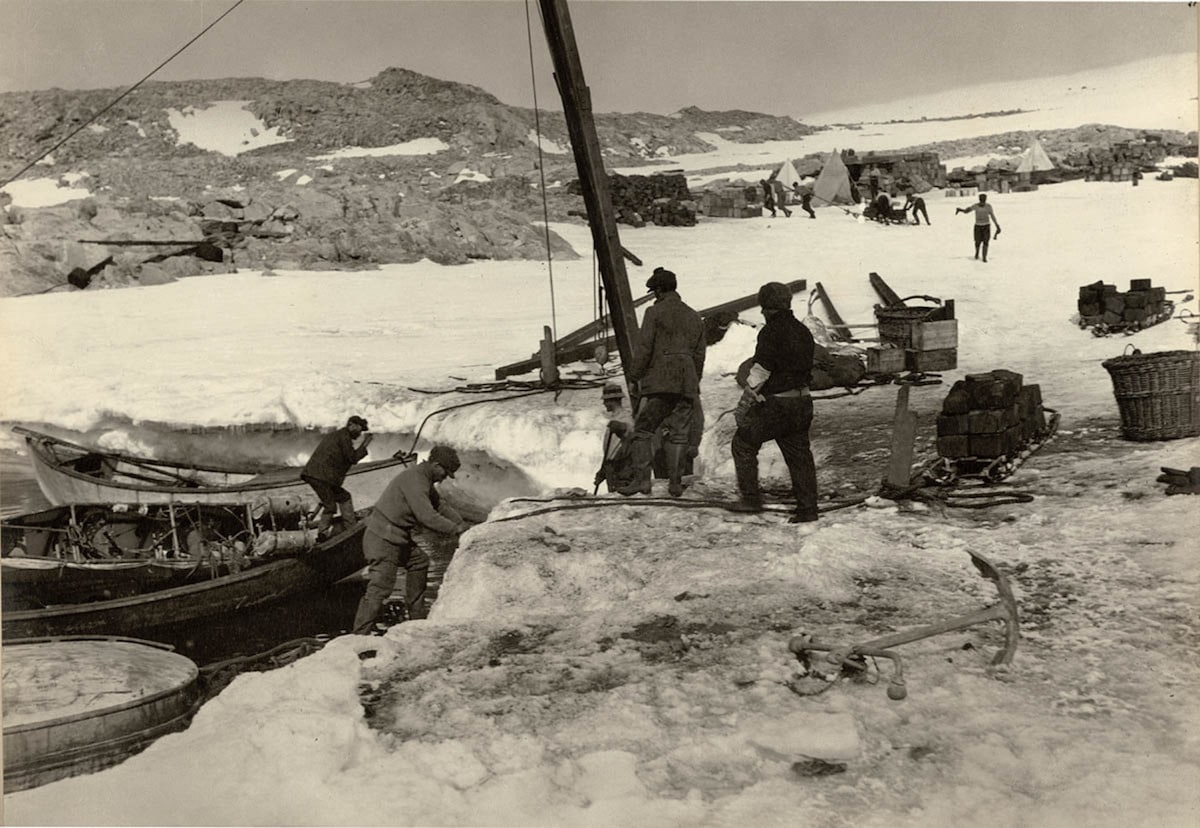
Unloading supplies at Cape Denison
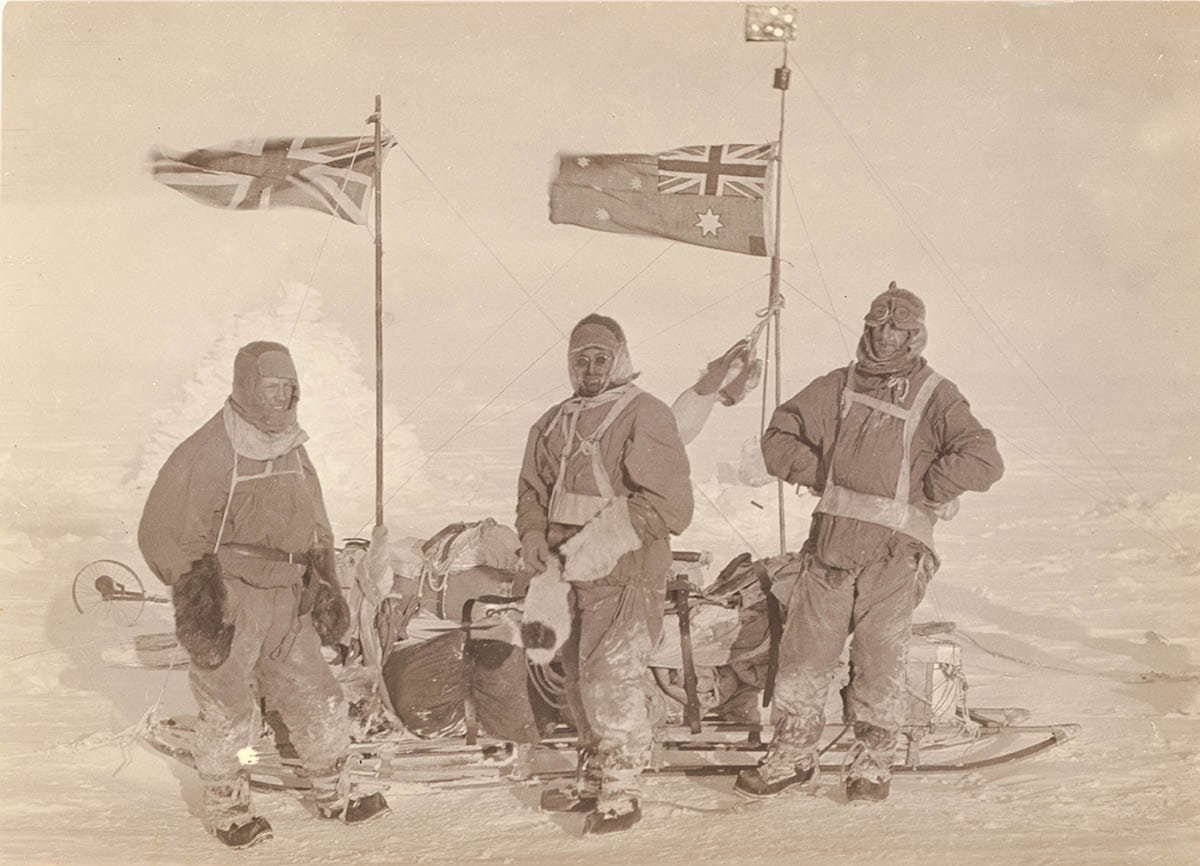
In full sledging gear on the plateau
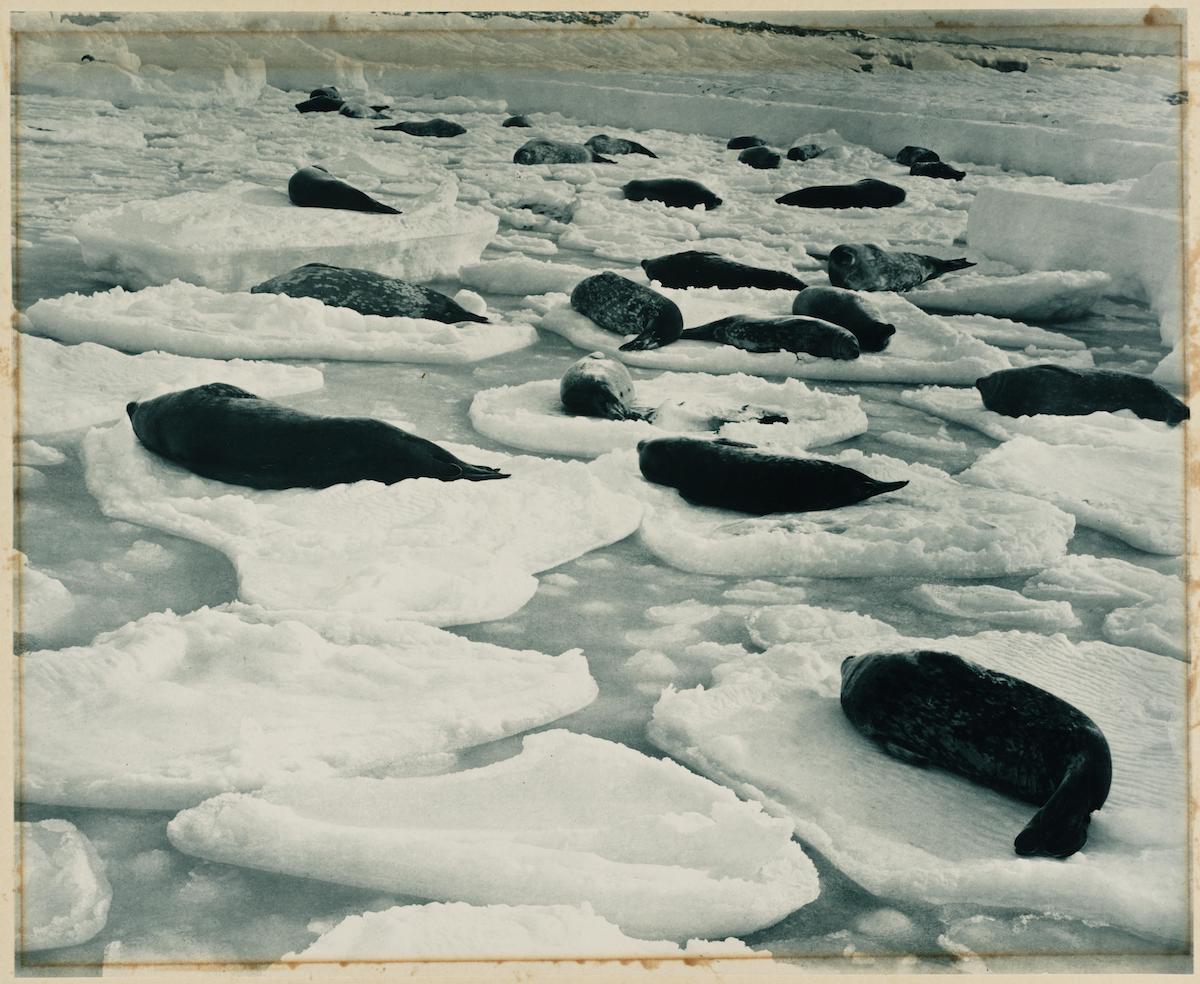
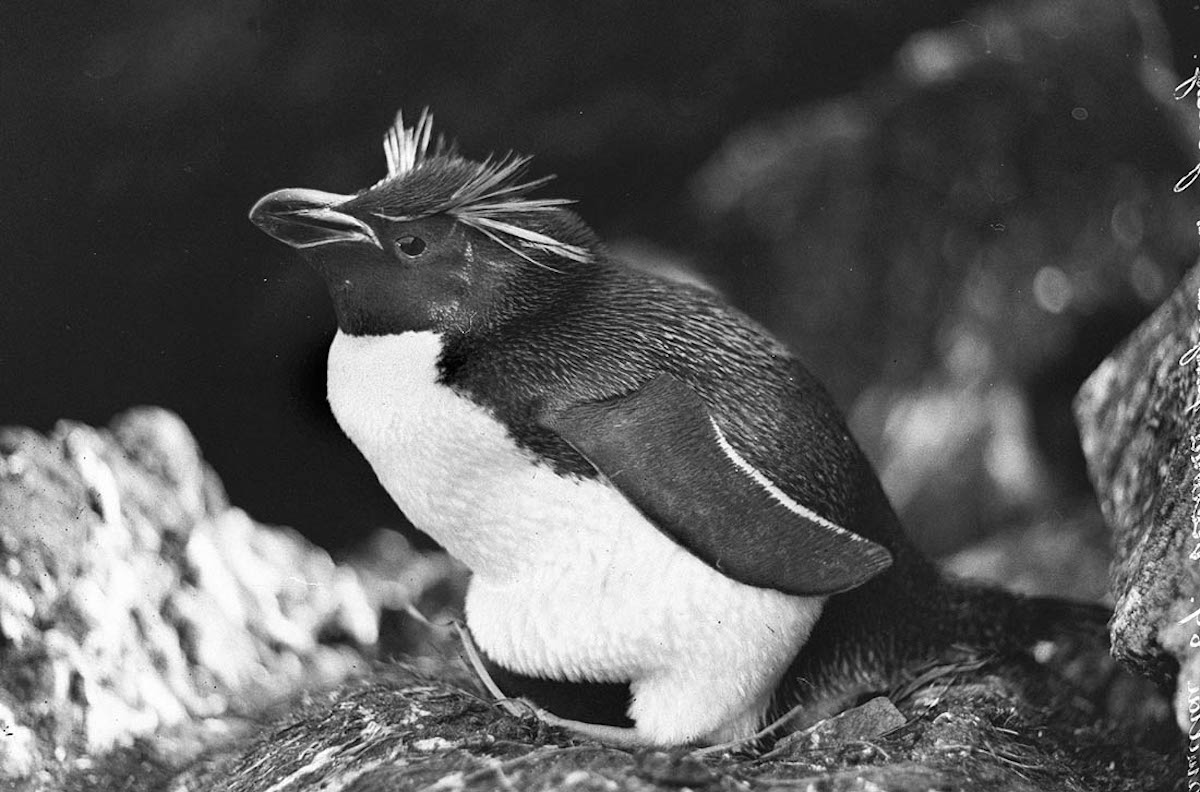

Wild & Watson in sleeping bag tent on sledge journey













































































